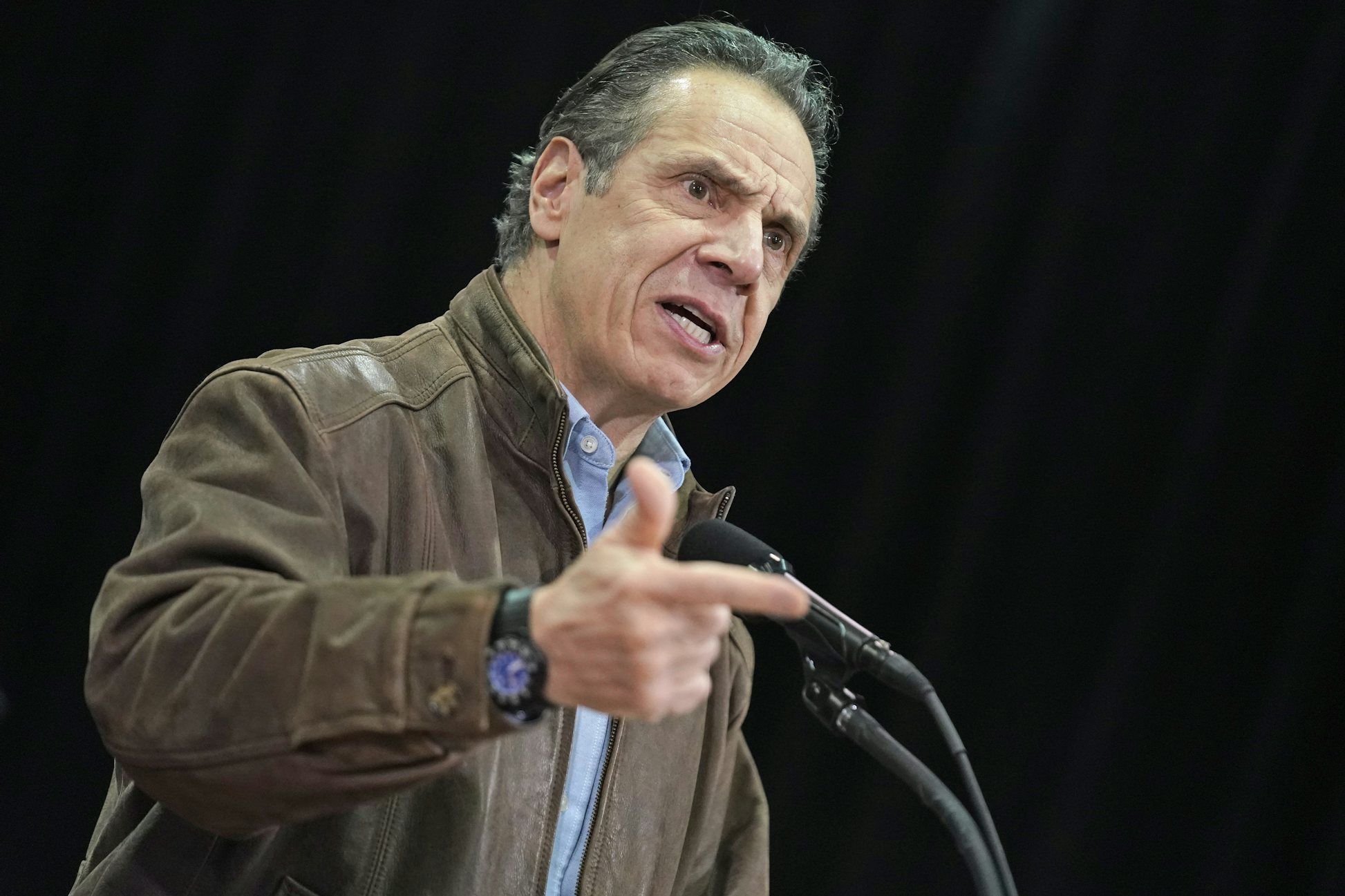 | American Jitters is a weekly email spotlighting
an article TNR editors are talking about. |
|
| The Cult of the Thuggish Democratic Politician | | 
SETH WENIG/GETTY | | The cult of tough Democratic leaders has long entranced pundits and party leaders alike. Going back at least to the party’s McGovern-era image as a hippie-appeasing collective dedicated to “amnesty, amnesty, and abortion,” national Democratic figures have placed great stock in a basic counterprogramming maneuver: Act tough, preach grim zero-sum austerity policies, and claim the coveted realist-center pole position in American politics. But as New Republic staff writer Walter Shapiro notes, this classic electoral feint hasn’t aged especially well, particularly as one of its heralded recent practitioners, New York Governor Andrew Cuomo, finds himself mired in scandals involving alleged sexual harassment and the effort to cover up nursing-home fatalities as the Covid-19 pandemic ravaged the Empire State. It’s unclear whether the embattled governor will serve out his full term, but even an intact Governor Cuomo will be a greatly weakened one. And as Shapiro notes, Cuomo’s path toward political exile had already been blazed by another storied tough-guy Democrat: former Chicago mayor and Obama Chief of Staff Rahm Emanuel, whose egregious mishandling of police abuse cases in Chicago has effectively locked him out of a place in the Biden Cabinet. The twin cautionary tales of Cuomo and Emanuel’s parallel rise to power speaks volumes about how Democratic politics have changed over the last few decades: The eclipse of Cuomo and, to a lesser extent, Emanuel signals the welcome end of the cult of barroom brawlers in the Democratic Party. This archetype dates back to the Kennedy years—with the ruthless Bobby Kennedy as attorney general, followed by the intimidating Lyndon Johnson as president. During the 1960s, the Democrats felt they had to prove that they were men of action willing to take on the Soviet Union and demonstrate that they could fight communism in the jungles of Southeast Asia. This tough-guy approach to politics returned to Democratic vogue during Bill Clinton’s presidency, in which both Cuomo and Emanuel played key roles. Stung by the Democrats’ three straight landslide defeats for the presidency in the 1980s, Clinton ran for the White House convinced that the Democrats had to refute Ronald Reagan’s claims that they were soft on crime and coddlers of welfare recipients. Cuomo and Emanuel are the embodiments of this bully-boy style. Many Democratic insiders—and a significant chunk of political reporters—believed that this was the way to lead in difficult times, especially with the Republican right on the march. But in truth, the twenty-first-century Democrats who tried to govern solely through fear did lasting damage to the party with their emphasis on intimidation rather than idealism. | | | | Advertising  | | | | Part of what got lost in latter-day efforts to mimic the Johnson-era brand of political hardball, Shapiro notes, is any clear sense of the stakes of the conflict. Yes, Lyndon Johnson could brandish a threat or orchestrate a behind-the-scenes payback scheme with the best D.C. power brokers—he was a longtime Senate majority leader prior to his tour in the Oval Office, after all. But Johnson didn’t resort to thuggish tactics for their own sake, or to grandstand against his party’s liberal wing. Indeed, he charted out his intimidation campaigns for the sake of an expansive liberal agenda. “Thuggish behavior was not Johnson’s true political strength,” Shapiro writes. “Johnson was able to pass the landmark legislation of his presidency—the civil rights bills, the creation of Medicare, and the War on Poverty—not only because of his bullying but, mostly, because of a burst of national unity following the Kennedy assassination and the lopsided Democratic congressional margins flowing from the landslide defeat of GOP nominee Barry Goldwater in 1964.” In other words, tough-guy posturing without a clear and defensible end in view—let alone a mobilization of popular opinion behind it—is just, well, bullying. And for all the fawning press that Cuomo, in particular, reaped for what appeared to be his no-nonsense handling of the Covid pandemic, the New York governor now is sundered from any semblance of a defensible governing record. Even his Covid press conferences—which briefly spurred talk of a dark-horse presidential candidacy at a brokered 2020 convention and netted Cuomo what now looks like one of the most poorly timed book deals in recent memory—have, under more measured scrutiny, come to seem like just more faux-disciplinary straight talk, playing more to a national media audience than to the New York populations then in critical need. “In truth,” Shapiro writes, there was nothing exceptional about Cuomo’s leadership in the crisis, beyond the schoolyard antics that accompanied his feud with Bill de Blasio, New York City’s easily mocked mayor. Yes, New York faces unusual pressures as America’s gateway to the world, since every international flight that arrives at JFK Airport runs the risk of accelerating the pandemic. That could have explained why infection rates in New York spiked so quickly last spring. But it doesn’t explain why the state has a humdrum record on vaccination. According to data compiled by The New York Times, New York is slightly below average in providing both first and second shots. The state, in fact, is roughly on par with Florida—and no liberal has ever put its Republican Governor Ron DeSantis on a pedestal. And that, in the end, is the most important moral of the downfall of the Cuomo-Emanuel leadership model: A blustering turn at the bully pulpit will generate cable hits and book deals, but without measurable results attached to it, the tough-guy act is little more than shadowboxing. | | —Chris Lehmann, editor | | Read Now | | | | | | Advertising  | | |  | Support Independent,
Issue-Driven Journalism | |  | | Donate | | | | | | | | | | | | Copyright © 2021 The New Republic, All rights reserved. | | |
|